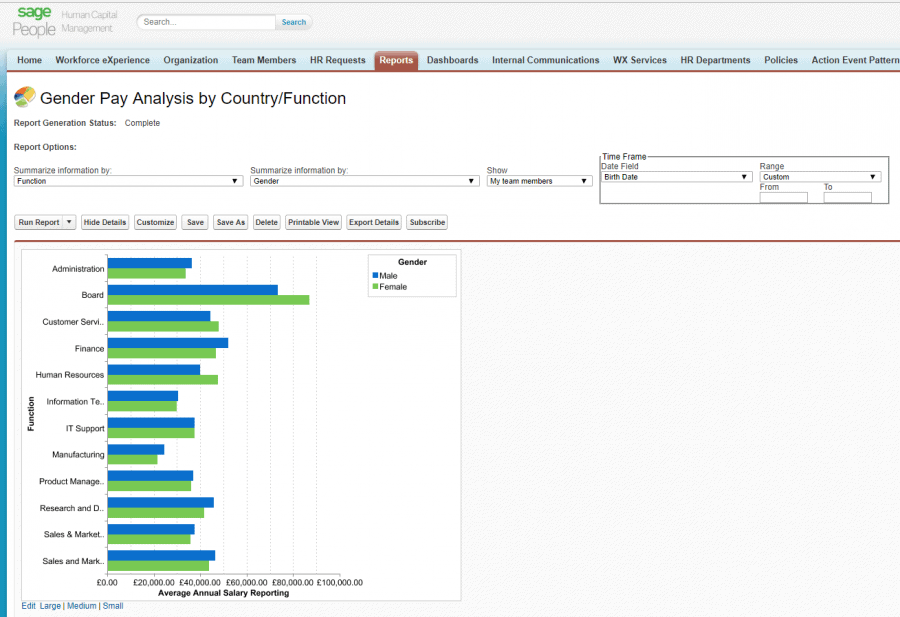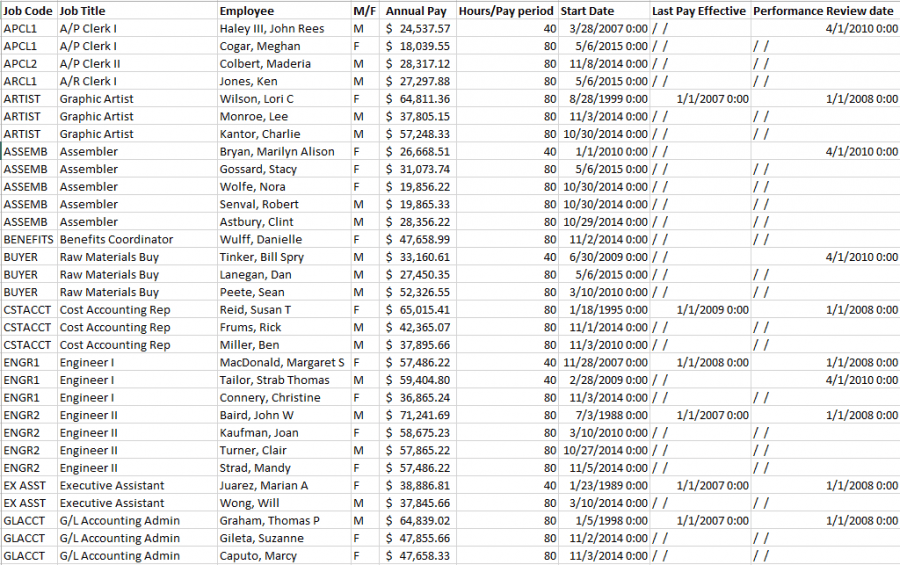Part 1 of 3: How HR Solutions can make it easier to Review Pay Equity
Pay Equity describes equal pay for the same job or work of equal value, regardless of factors such as gender and race. In an ideal world, pay equity would be the rule not the exception, but in reality, women in Canada only earn an average of $0.87 for every dollar earned by men. Visible minority women are especially impacted by the wage gap, earning $0.84 of what visible minority men earn and $0.74 of what all men earn1. Pay equity is becoming increasingly top-of-mind for organizations, however it can be a bit of mystery as to how to actually achieve it and figuring out the current equity balance requires in-depth insight into company data. Where can organizations find the in-house data they need to review and improve on pay equity?
With talk of federal pay equity legislation on the horizon, it’s becoming increasingly more important for organizations to have the ability to generate reports about pay equity and have plans in place to close pay gaps within the company. Reporting features in HR solutions like Sage People and Sage HRMS make it easy to proactively analyze and review pay equity so you can make your data actionable.
What are the benefits of generating Pay Equity Reports in an HR Solution?
According to Amanda Scott, HR Consultant at The Answer Company, “you might not even know that there is a problem within the organization”, so whether or not you think it’s an issue for your company, it’s important that you generate reports to review it. Details surrounding how much employees get paid typically resides within the Human Resources (HR) department, and they’re often left with the time consuming task of slicing and dicing payroll reports into a spreadsheet to get detailed insight into where the organization stands with pay equity and what changes need to be made in order to achieve it.
Using HR solutions to generate pay equity reports helps reduce, or even eliminate, the manual processes involved in reviewing pay equity. “How valuable would it be if you could push a button and know out of all of your employees who was male, who was female, what their job title was and plot pay next to that?” asks Amanda Scott. Different HR solutions have varying capabilities and reporting features, but they all provide a centralized place for employee data to live.
What kind of reports can be created in HR Solutions?
Solutions like Sage People and Sage HRMS provide you with similar out-of-the-box reports that can be used to review pay equity, including statistics for gender, function (job title) and pay. These highly versatile reports give you the flexibility to add and remove dimensions to the report based on the specific information you want to analyze. The main difference between the pay equity reporting capabilities in these two solutions is how the reports are displayed and how they can be delivered to decision makers in the company.
In Sage People, pay equity reports can be displayed in summary graphs and made visible to decision makers in Workforce Experience Management (the built-in interactive employee portal), so they have the ability to access real-time pay equity analytics for their team on a daily basis. Detailed reports can be shared, but the summary graphs make it easy for decision makers to get the information they need at a single glance.

Figure 1: Sage People Gender Pay Analysis Report displayed as a graph that can be shared with decision makers in the Workforce Experience Management Portal
In Sage HRMS, reports are generated using Crystal Reports, so information can be exported into spreadsheets or PDFs and sent to decision makers. Unlike Sage People, graphs would need to be generated once the detailed report is exported into a spreadsheet, but the information is still compiled into one convenient and actionable report. Either way – both HR solutions equip you with detailed information that can be used to review pay equity and share with decision makers, enabling them to be proactive in the quest to achieve pay equity within the company.

Figure 2: Sage HRMS Gender Pay Analysis in Exported Spreadsheet
As described by Amanda Scott, “the important part is having a HR solutions that centralizes this data for you. With an HR solution, you don’t have to be a coder or a specialist in report writing to get this [pay equity] information. Sage People is a drag-and-drop and Sage HRMS is a double click. Either way you get the information you need and you know what’s going on in the market place. You can see the trends and ask: do we even have a problem?”.
Reporting features in HR solutions ensure that reviewing pay equity doesn’t have to be time consuming or complicated. It eases the process of conducting a pay equity review and empowers decision makers to be a proactive part of the solution, instead of the responsibility of encouraging and enforcing pay equity to fall solely on the shoulders of the HR department.
1Canada 2011 Census – National Household Survey (2015)
